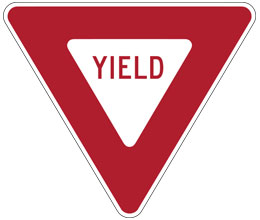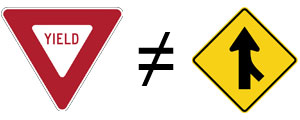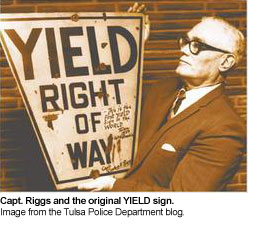
It’s Friday. Today, Apple CEO Steve Jobs held a press conference at Apple headquarters to discuss the iPhone 4 and all the negativity that’s been floating around the last few weeks. It’s been talked about since the iPhone 4 came out. The places where I’ve seen people with any clue about the situation with the iPhone antenna have said what Steve Jobs said in his press conference. Plenty of experts in antenna design and RF technology have said that this is nothing that is out of the ordinary. This is something that happens on every cell phone. My iPhone 3G does it. My Samsung Galaxy does it. Heck, the new HTC Incredible that I just got this week does the same thing. Hold any cell phone in the wrong way and you can cause the “bars” to drop. Signal attenuation is just a part of life when you’re dealing with radio frequency. I think this is just the first time that people have been able to see how the signal indicators on a cell phone are actually working. The thing that people don’t realize is that the bars are useless when it really comes to your signal on a cell phone.
Naturally, the Apple haters came out in force after Steve Jobs said that there wasn’t really a problem (which I don’t believe there is). Then as a compromise for the consumers, they offered free bumpers for people that want to have one. For some, that wasn’t good enough. Leading the way, it seems, is Newsweek “columnist” and self-proclaimed “Fake Steve Jobs,” Daniel Lyons.
I wonder if panic has started to set in at Newsweek yet. If not, it should. Because today’s hastily posted opinion by Daniel Lyons—ostensibly to spread unsupported iPhone 4 rumors and how Newsweek intends to ignore the truth—only did further damage to Newsweek’s reputation.<
“The problem is that because the phone’s antenna is embedded in its frame, your hand touches the antenna when you make a call. That can interfere with reception, to the point that in some cases calls get dropped.” It’s interesting that experts that have been talking, for example on, say, TWiT.tv’s shows have shown that this is a typical case for this, yes, it can interfere with reception. Despite that, there have been tests a plenty that show, no matter if the bars go all the way down, the calls don’t usually get dropped. It’s a point like this that the mainstream media prefers to ignore. The bars on your phone don’t mean anything. With regards to the RF signal for the iPhone 4, antenna engineer Spenser Webb from Antennasys.com said on one of the latest episodes of TWiT about their tests, “when we went down to the grip of death, in fact we didn’t just do the grip of death, we did the two handed grip of death and, yes, we almost, almost made it thinner. In that case we got it down to one bar but we couldn’t drop the - we couldn’t drop the call.” That’s the real point. You can get the bars down to nothing. Are people really dropping more calls? People that complain get asked that question and they can’t say that they do drop more calls. If an antenna engineer can’t get it to happen consistently, that doesn’t seem to be a problem, now, does it?
This is classic Daniel Lyons behavior. No matter what the knowledgable world says, he just keeps saying things that can’t be substantiated, and maybe, eventually, everyone will know that he’s full of it. By refusing to acknowledge the problem, Lyons just reinforced the image of Newsweek as a magazine that is in deep denial and unable to admit a big pile of mistakes—a company that has for so long been able to bend reality to suit its needs that it now has lost touch with reality itself.<
“Earlier this week Consumer Reports declared it could not recommend the phone until Apple comes up with a fix for this problem.” Ah yes, Consumer Reports. The land of contradiction. They say that they can’t recommend the iPhone 4, yet it’s one of (if not THE) top smartphones listed on their own site. A group that has already had engineers come out and say that their testing methods on the iPhone were totally flawed. Maybe people should not recommend the use of Consumer Reports until they can come up with real testing methods that are accurate. Makes you wonder what other things they have fudged in their “testing.” Food for thought.
More food for thought, I have to wonder what Newsweek is thinking. I’ve read plenty of articles by Daniel Lyons over the years. I’ve seen that Daniel Lyons has such hatred for all things Apple, it’s kinda embarrassing that he’s still allowed to write. The trust that journalists have had is disappearing because of things like this. Granted, it’s probably one of the reasons that, back in May the Washington Post Co., the owners of Newsweek, put the magazine up for sale.
Newsweek Managing Director Ann McDaniel said, “Our industry is changing. Newsweek has changed along with it, and today’s announcement reminds us that we must continue to grow, to adapt, to find new ways of serving readers, users and advertisers.” However, it’s writing like the misleading garbage that comes from the likes of Lyons that makes readers hate mainstream magazines. Biased writing being disguised as being subjective is killing things like Newsweek.
In a statement, Washington Post Co. Chairman Donald E. Graham said, “The losses at Newsweek in 2007-2009 are a matter of record. Despite heroic efforts on the part of Newsweek’s management and staff, we expect it to still lose money in 2010. We are exploring all options to fix that problem. Newsweek is a lively, important magazine and website, and in the current climate, it might be a better fit elsewhere.” Daniel Lyons is a perfect example of what can cause the downfall of a news magazine like Newsweek. Their work ceases to be news. It all just becomes like, well, a blog. And that’s something that Daniel Lyons hates. He was the author of a Forbes cover article, “Attack of the Blogs”, where he claimed that blogs “are the prized platform of an online lynch mob spouting liberty but spewing lies, libel and invective.” Reading articles by Lyons falls right into what he claims to hate. So sad.
All that aside, Apple admitted that they aren’t perfect. Yeah, some people claim to be having problems with their phones. I’ve had that problem with plenty of phones over the years. I just accept that as part of using a cell phone. Could Apple have handled things different? Sure. Is this all as big a deal as the mainstream media are making it out to be? Definitely not. At the end of the day, there’s still 3 million of these phones out there in the wild, sold in just 3 weeks. Steve Jobs said only 0.55 percent of iPhone 4 users have reported problems with their antenna or reception. Only 1.7 percent of customers are returning the new phone, compared to a 6 percent return rate on the iPhone 3GS. Most customers, Jobs said, say the new antenna gets better reception than any previous iPhones. Jobs also said all other mobile phones suffer the same problems when you hold them in certain ways, and that “it’s a challenge to the entire industry.”
Daniel Lyons said that “That’s ridiculous. It’s absurd.” But hey, that’s nothing new. I think Daniel Lyons has a history of making ridiculous claims. Fortunately 3 million people still love their iPhones. Even if they may have a Bumper on them.

















 In the case of the Yield sign, the original concept and design was created by Capt. Clinton Riggs, a police officer in Tulsa, Oklahoma. According to the
In the case of the Yield sign, the original concept and design was created by Capt. Clinton Riggs, a police officer in Tulsa, Oklahoma. According to the 